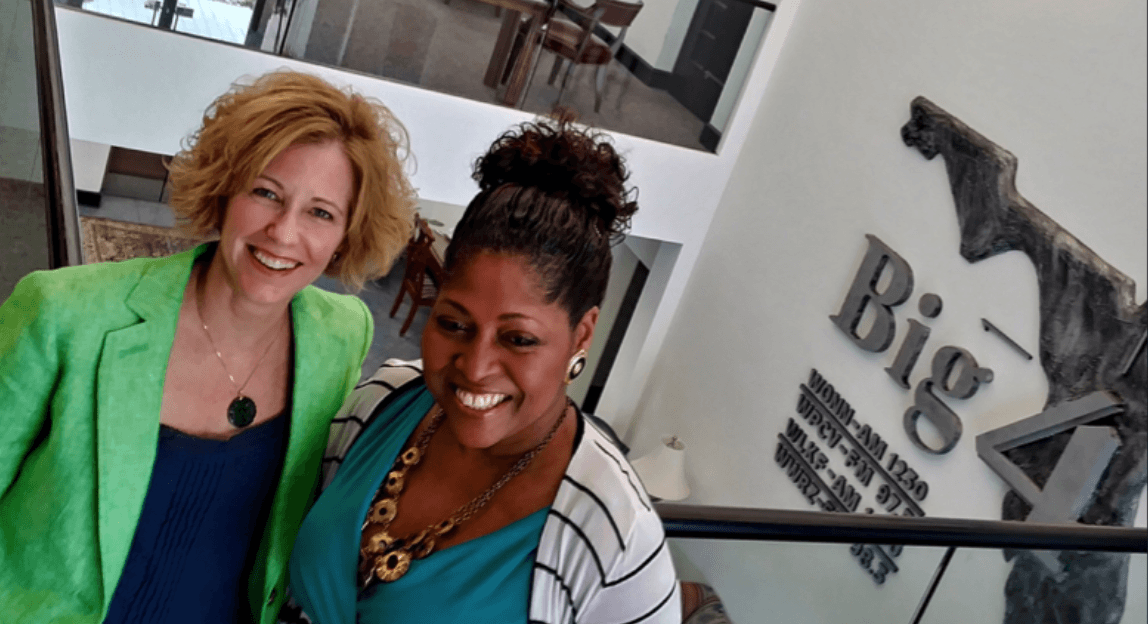In April, I had the pleasure of stopping by the Hall Communications studio for a Polk County Today interview about mindful leadership with Andrea Oliver. Here are some highlights from that conversation:
As I continue to practice and teach mindfulness explaining what it means to both individuals and to those charged with leading teams, I am finding that my definition of it is continuing to evolve – and for me personally, applying a mindful approach to living and leading becomes more necessary. Mindfulness has been practiced in Eastern cultures for centuries and attained “movement” status in the United States about five years ago. In 2014, the topic made the cover of Time Magazine, fueling the conversation about what it is – and isn’t – and the benefits of the practice.
When explaining what mindfulness is to audiences, I often refer to the wisdom of
Jon Kabat-Zinn – a modern day pioneer in the field.
He defines mindfulness as “paying attention in a particular way, on purpose,
in the present moment, non-judgmentally”.
When mindfulness is applied to leadership the topic becomes more complex and involves more than just the ability to focus our attention. It also requires intentionality in our actions and honest reflection on the results of those actions. Mindful leaders are self-aware and understand the impact of what I refer to as their “energetic wake”. Just as a ship sailing across the ocean leaves a wake behind it, we as leaders create energetic wakes. Our energetic wake is simply generated from the energy that we project to those around us – the people we lead, our boss, and colleagues – and how that energy is experienced by others greatly impacts our effectiveness as leaders and therefore the success of our organizations.
To create more awareness of the “energetic wake” you create, pause and reflect on these questions:
- Was my impact as a leader today positive, negative or neutral?
- Were my team members energized or depleted by my interaction with them?
- Do I need to slow down?
- Am I giving my team the time and space they need to think strategically rather than reactively?
- How are my messages being received?
- Am I creating the conditions for my team to thrive?
Honest answers to these questions provide important insight into how others experience and perceive your leadership style and where there might be opportunities for growth.
Getting candid feedback is also helpful. A powerful tool that is useful for increasing self-awareness is a 360-degree assessment like The Leadership Circle Profile™. The “360-degree” part of the assessment means that a leader’s peers, superiors, and direct reports have an opportunity to provide feedback. The information that is generated from the assessment provides a comprehensive view of a leader’s natural strengths and abilities while identifying potential blind spots that might be getting in the way of leading with excellence. Through the 360-degree assessment and the perspectives provided, leaders gain deeper insight into their behavior, what is driving it, and how it impacts their ability to lead effectively. Leaders are able to use what they learn from the assessment to make conscious choice about how to relate and communicate better, use their innate strengths to inspire their team and ultimately create an environment where they and others in the organization can thrive.
Learning to lead with excellence is a never ending journey.
The job of leadership is never “done”.
As the world around us constantly changes, that means that we need to continue to evolve and grow to meet the new demands and challenges of our organizations and communities. Cultivating the ability to lead mindfully will keep us more connected to our purpose as leaders and focused on the outcomes we want to create.
Listen to the 15-minute interview.
Let’s grow together…

